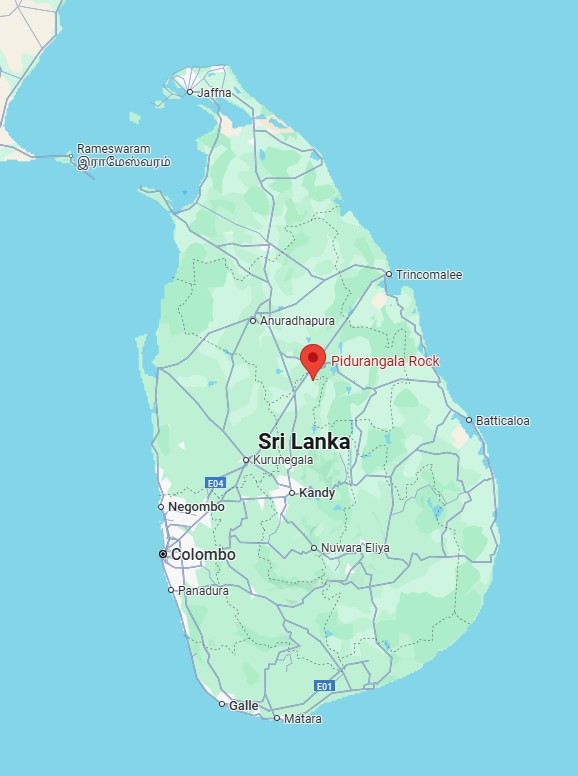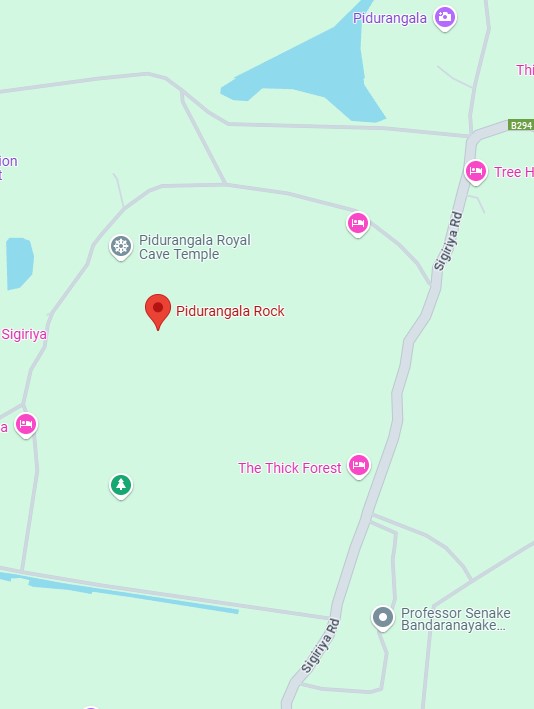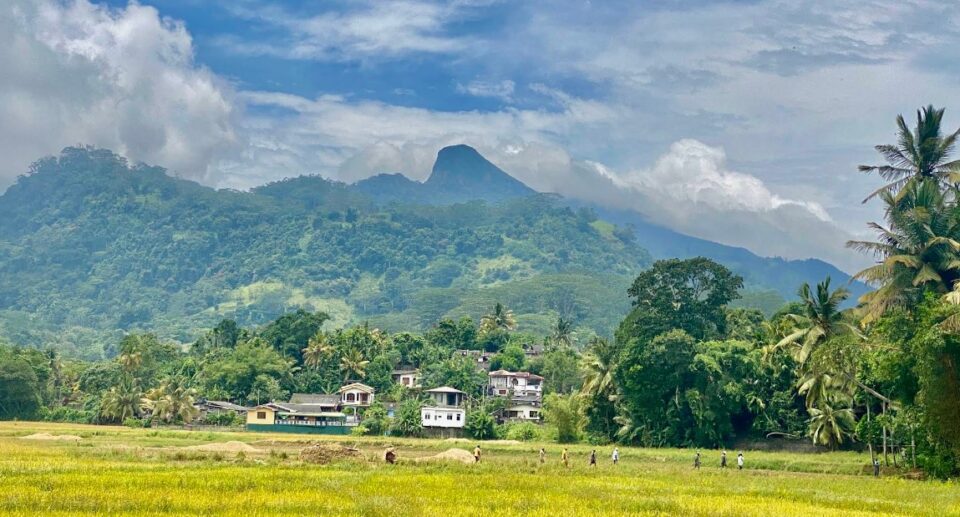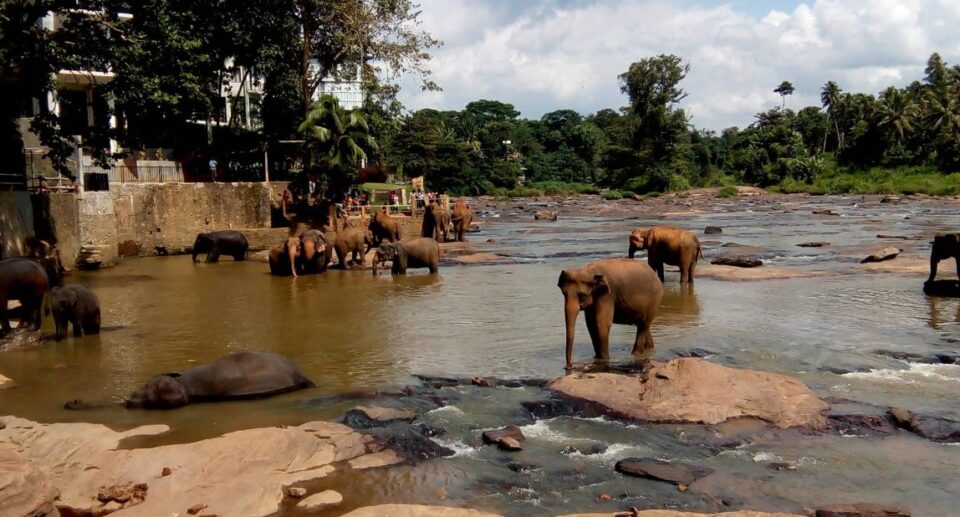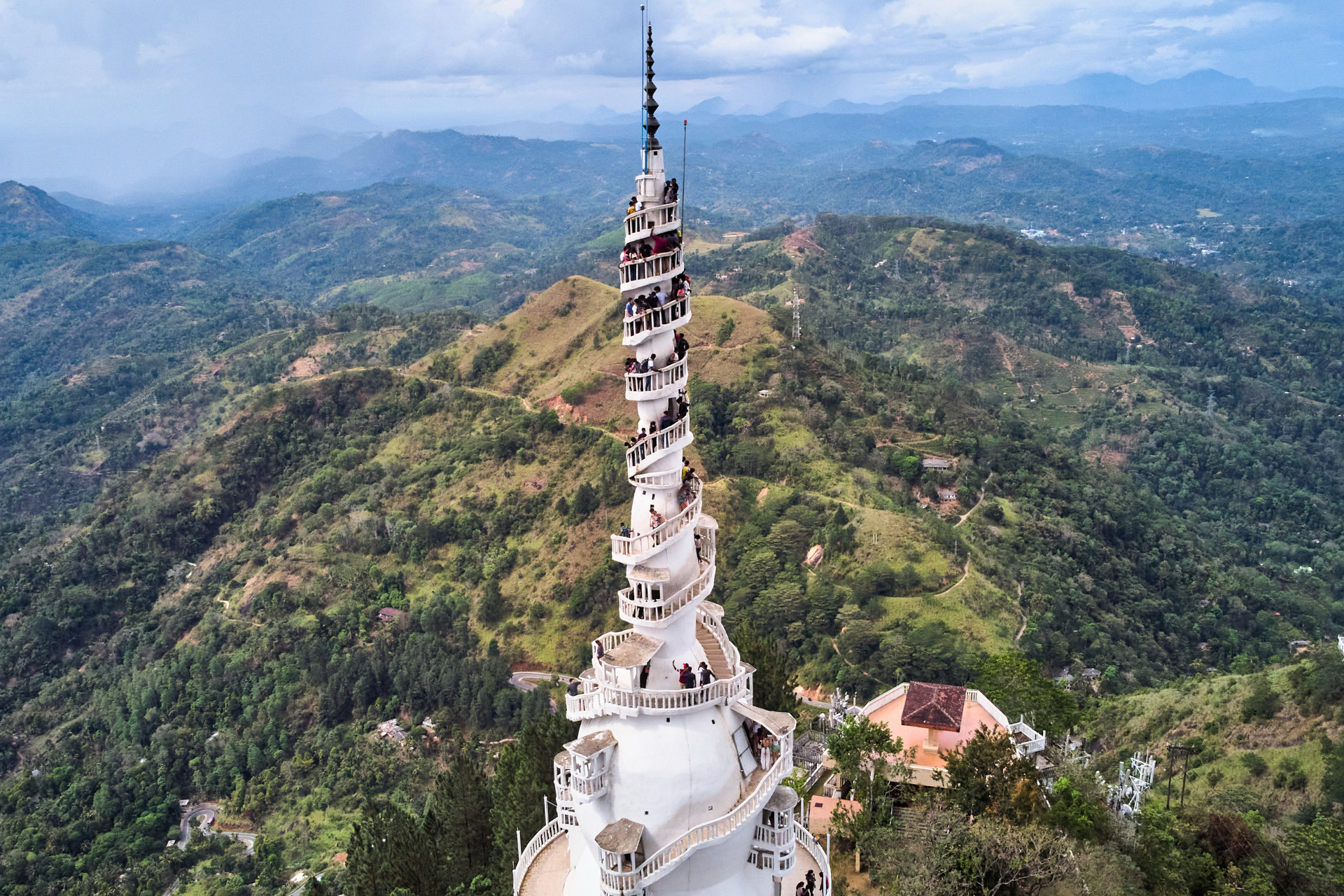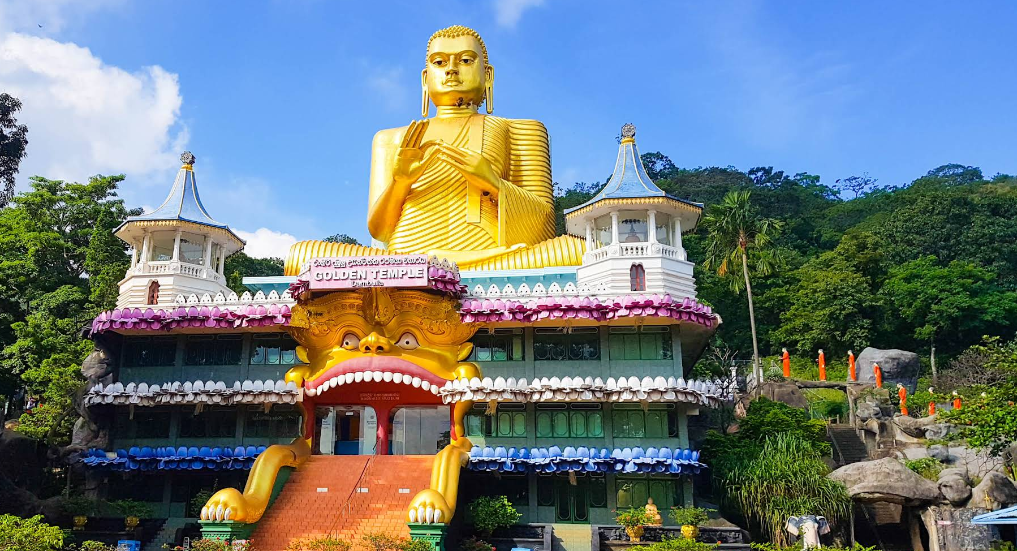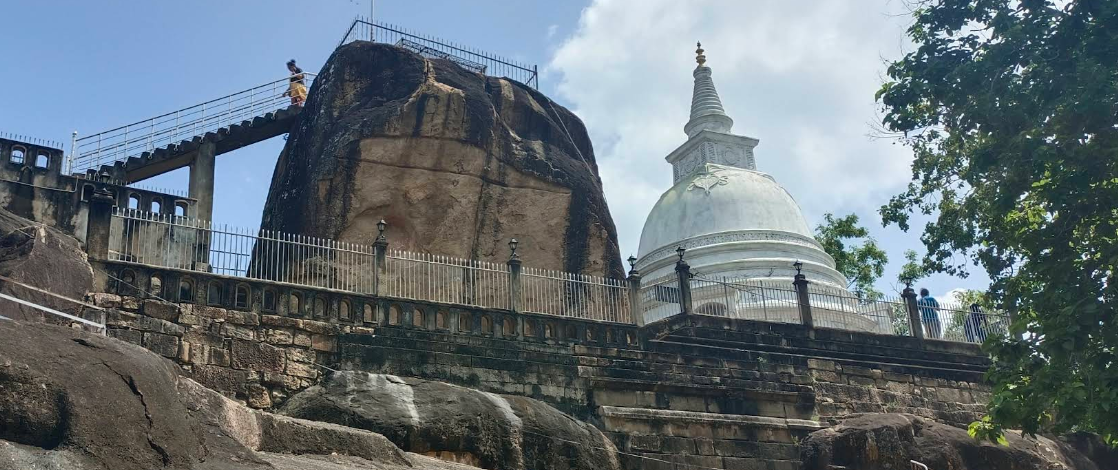Pidurangala Rock: A Hidden Gem in Sri Lanka’s Matale District
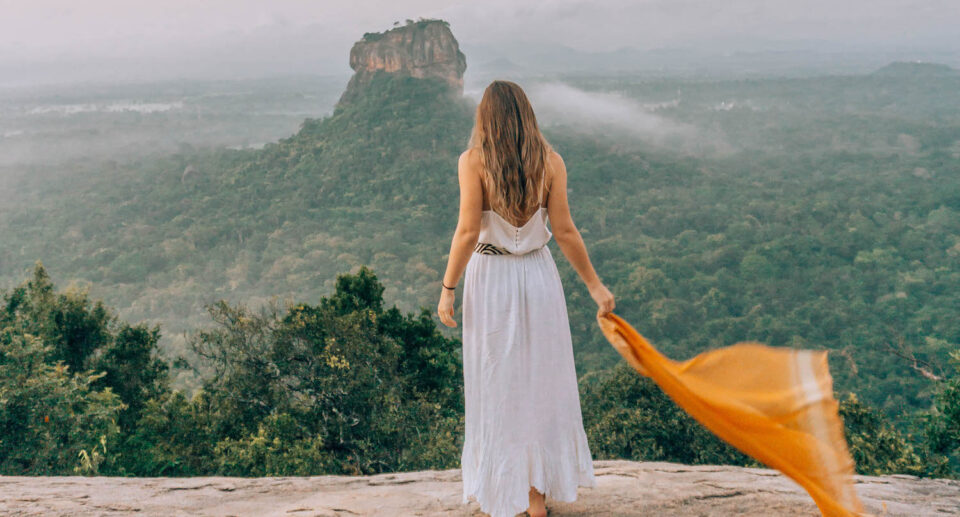
Sri Lanka, with its cultural heritage and diverse landscapes, is full of iconic symbols. One of these is the Pidurangala Rock in the Central Province’s Matale District. Second to none to its neighbor, the Sigiriya Rock Fortress, a globally renowned gem, Pidurangala Rock offers travelers a less touristy, reflective experience to tap into Sri Lanka’s rich past and awe-inspiring natural world.
While Sigiriya astounds with its grandeur and regal history, Pidurangala provides a spiritual counterpart—an ancient Buddhist monastery perched atop a rocky hill, affording stunning views, a strenuous hike, and temporary moments of serenity. Its proximity to Sigiriya makes it an ideal add-on to any central Sri Lankan itinerary.

Historical Significance
The Pidurangala Rock history dates to the 5th century AD when King Kashyapa was in power (473–495 AD). After killing his father, King Dhatusena, and usurping the throne, Kashyapa fled to Sigiriya out of fear that his brother, Moggallana, would exact his revenge. Kashyapa needed to displace the Buddhist monks who were living on Sigiriya Rock so that he could build his rock fortress there.
As a form of restitution and as an act of piety, King Kashyapa constructed Pidurangala as a new monastery for the homeless monks. He constructed various monastic structures, a stupa, an image house, and numerous meditation caves. These structures turned Pidurangala into a religious and spiritual retreat, a place of meditation and monastic practice.
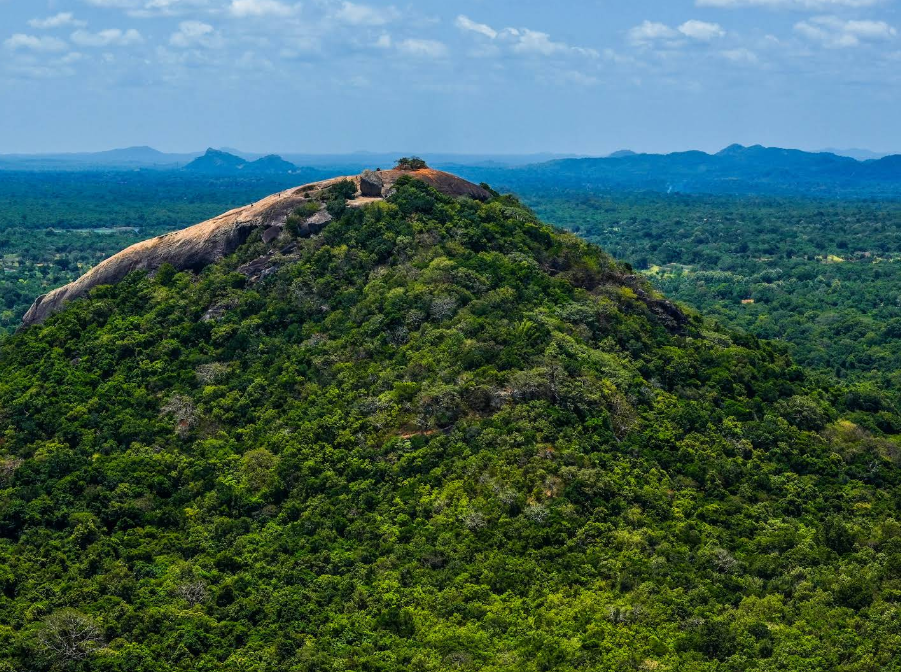
The Pidurangala Raja Maha Viharaya at the base of the rock still bears testimony to that depth of history. It’s a simple but sacred temple that still caters to the local community and pilgrims who come.
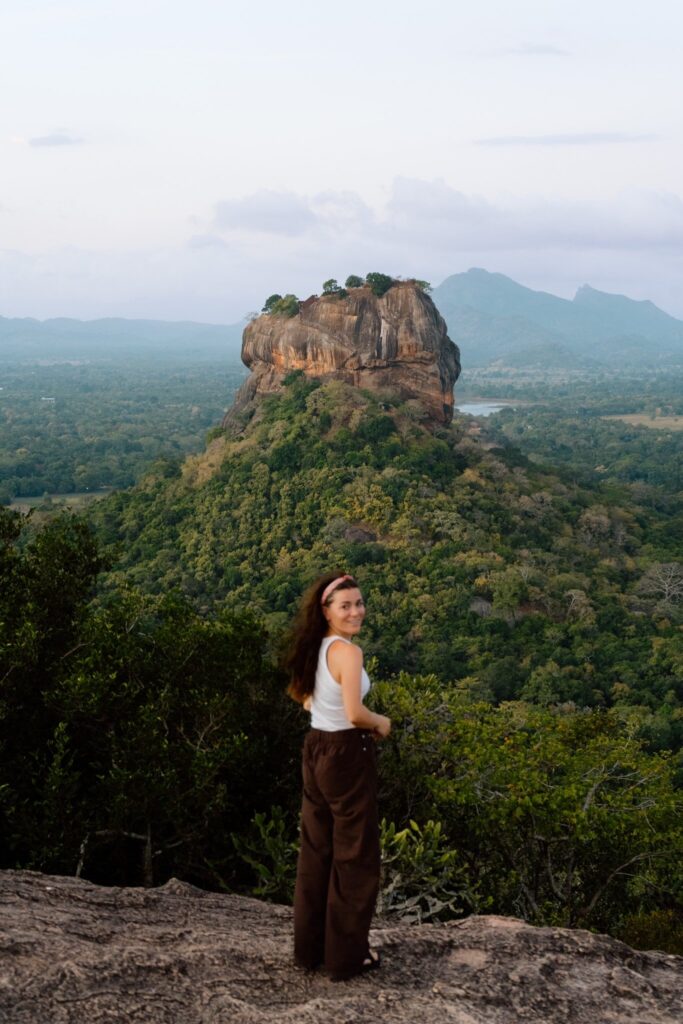
The Climb: Adventure Meets Spirituality
The ascent of Pidurangala is a medium to hard ascent, taking around 30 to 45 minutes, depending on how fit one is and how quickly one ascends. The route begins at the Pidurangala Temple, where there is a minor entrance charge (around LKR 500) that is collected by the visitors, and this goes to temple maintenance. Decent attire is required when entering the temple complex—shoulders and knees covered.
The first part of the climb is covered in stone steps and worn trails, shaded by canopy cover and lined with ancient ruins. Monastic caves are seen along the trail, carved into the rock and once lived in by monks in contemplation. Some have remnants of ancient brick walls and faded paintings, showing their former religious purpose.
About half-way along the path is the reclining Buddha statue, built from brick and dating back more than 1,000 years. Although ruined (its head was destroyed by treasure hunters), it serves as a powerful reminder of the site’s spiritual past.
As the ascent continues, the path becomes increasingly rough, forcing hikers to crawl over huge boulders and walk along thin rock paths. This ultimate climb might challenge your physical dexterity, but it increases the spirit of adventure and achievement.
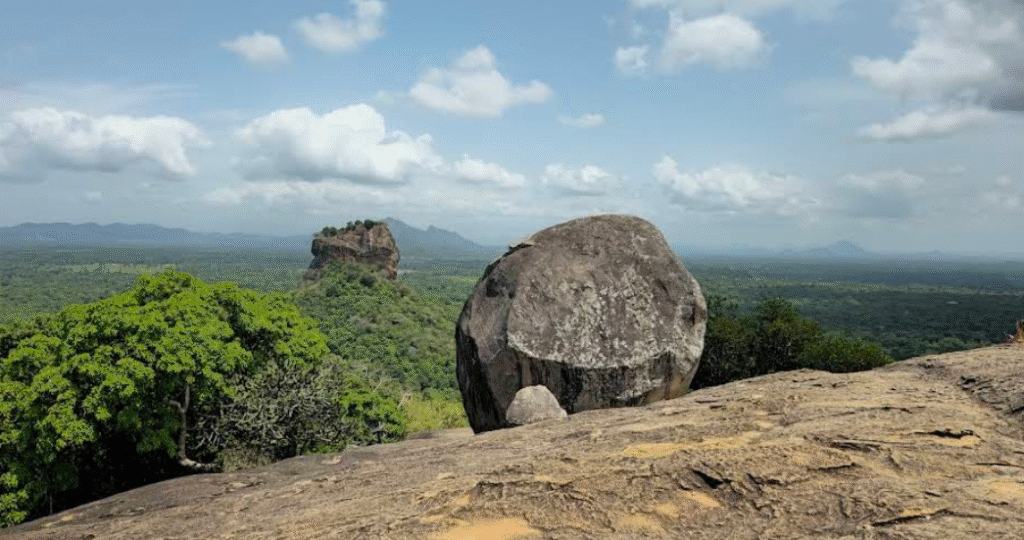
The View from the Top
At the summit, the toil of the climb is rewarded by a breathtaking 360-degree view of the surrounding landscape. To the south, Sigiriya Rock ascends majestically, dominating the treetops like a monolithic fortress. The two rocks, one royal and powerful, the other religious and inaccessible, are a profound metaphor for Sri Lanka’s double history.
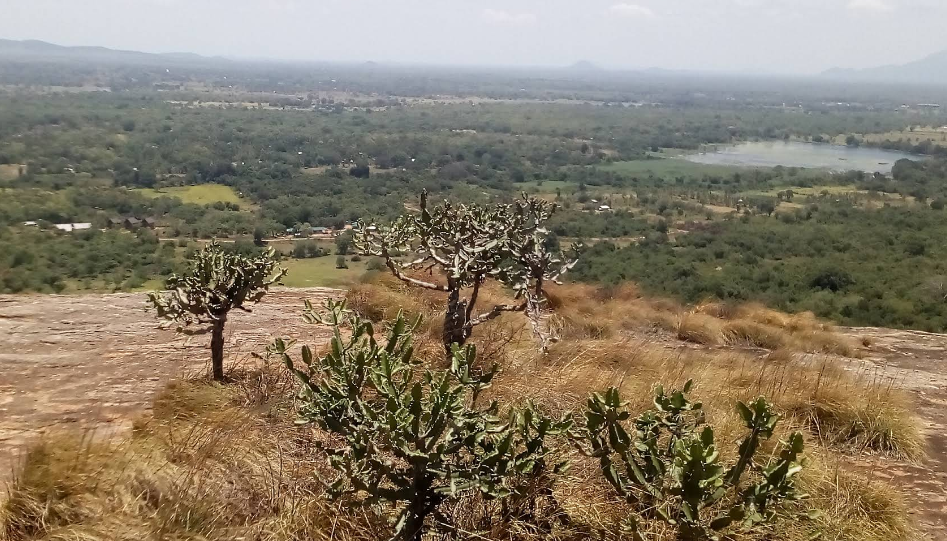
Looking in another direction, one sees a mosaic of green forests, distant mountains, lakes, and villages—an untainted landscape shifting color and shade with the time of day. Sunrise and sunset are especially magical moments at Pidurangala. The golden light of dawn falls on the misty plains, and sundown light tints the sky with oranges and purples.
For some, sitting atop the rock at dawn or twilight becomes a time of reflection or silent thought, with the wind blowing through the trees and the world far below slowly coming to awareness or retreating to sleep.
Ecological and Cultural Significance
Pidurangala is part of a larger ecosystem consisting of the Sigiriya Sanctuary and Minneriya National Park, so it is an important site in terms of biodiversity. When hiking, one often finds birds calling, small mammals being seen, or monkeys swinging from tree to tree.
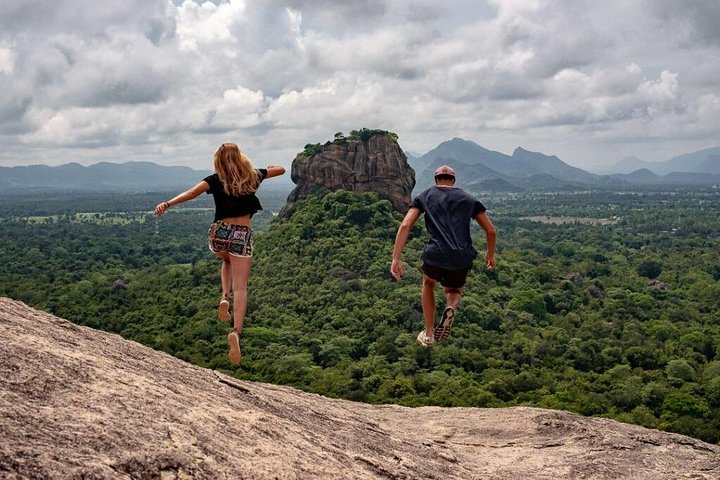
Culturally, Pidurangala remains a dynamic religious site. The temple is utilized for local Buddhist ceremonies, and the site still possesses its spiritual depth. Sri Lankans travel to Pidurangala not just for the hike but also pilgrimage, to pay homage to its monastic past and discover inner peace.
Tourists are reminded to respect this spiritual setting by remaining silent, not trash, and staying away from and not touching ancient ruins.
Travel Information How to Get There: From Dambulla: In a bus or tuk-tuk direction of Sigiriya. Pidurangala is approximately 1.5 km north of Sigiriya Rock.
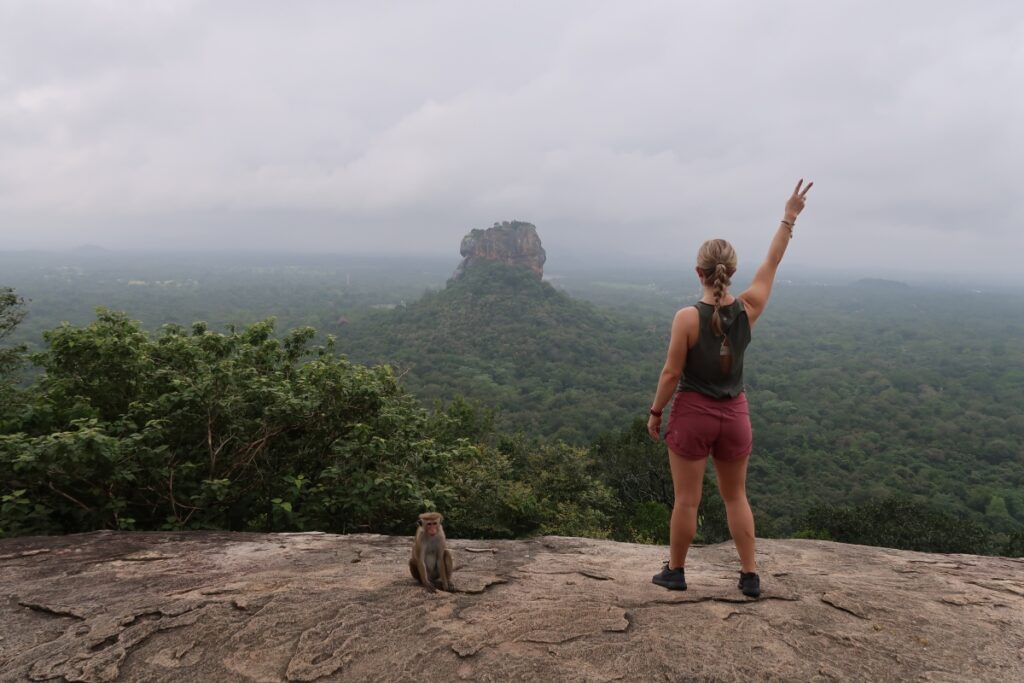
From Colombo: A 3.5 to 4-hour car journey or bus ride to Dambulla, followed by tuk-tuk to Pidurangala.
From Kandy: Approximately a 2.5-hour drive.
Best Time to Visit: Dry Season: November to April, clear skies and cooler weather. Early Morning or Late Afternoon: Best for heat avoidance and sunrise/sunset catching.
What to Bring: Walking shoes or hiking sandals, Water and light refreshments, Sun protection (hat, sunscreen), A flashlight if hiking early or late, Temple-entry modest attire
Places of interest in the vicinity
Sigiriya Rock Fortress – A World Heritage Site renowned for its frescoes, mirror wall, and ancient palace ruins.
Dambulla Cave Temple – Another World Heritage Site containing five fantastically decorated caves with hundreds of Buddha images.
Minneriya National Park – Famous for “The Gathering” of wild elephants in the dry season.
Pidurangala Rock is more than a trek; it is a spiritual pilgrimage along Sri Lanka’s fertile tapestry of history, nature, and religious heritage. While it is not as spectacular as Sigiriya’s royal fortress, it is a more authentic, down-to-earth experience—a place where stillness, nature, and history combine.
Whether you are a seasoned trekker, a student of the past, or someone who craves solitude, Pidurangala welcomes you with open arms and expansive horizons. Its stony path, ancient roots, and panoramic vistas ensure that this rock, humble but potent, leaves an unforgettable mark on your heart.
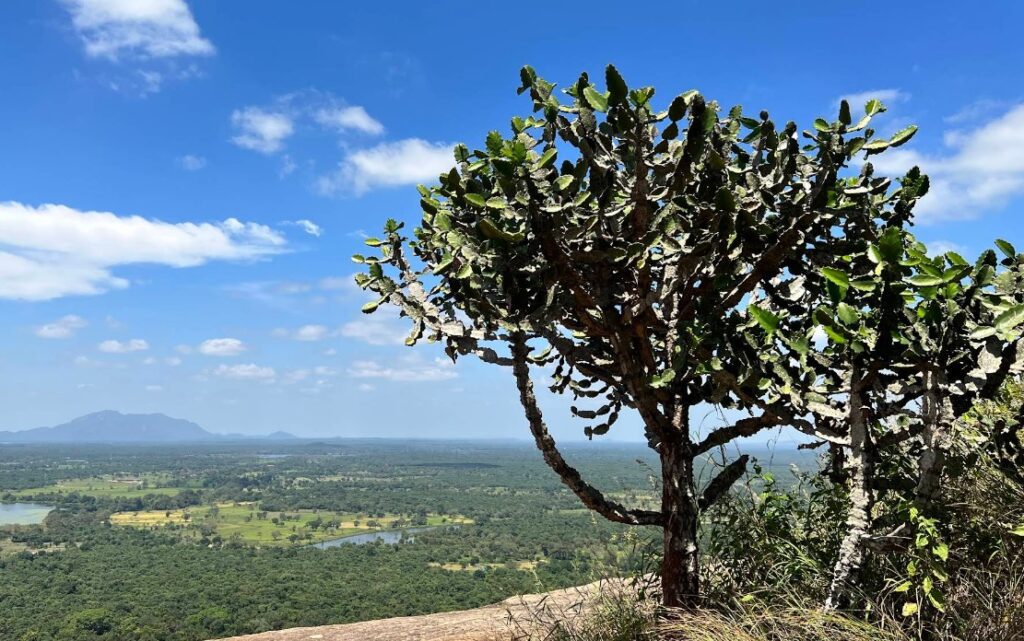
From Major Cities
From Colombo (approx. 170 km / 4-5 hours)
- By Car/Taxi:
- Take the Colombo–Kurunegala–Dambulla route via the A1 and A6 highways.
- From Dambulla, continue towards Sigiriya (~20 km).
- Pidurangala is about 1.5 km north of Sigiriya.
- By Bus:
- Take a Colombo–Dambulla bus (available from Bastian Mawatha Bus Terminal).
- From Dambulla, take a local bus or hire a tuk-tuk to Pidurangala.
From Kandy (approx. 90 km / 2.5 hours)
- By Car or Tuk-Tuk:
- Travel on the A9 highway towards Dambulla, then follow signs to Sigiriya/Pidurangala.
- By Bus:
- Buses run frequently from Kandy to Dambulla.
- From Dambulla, switch to a local bus or tuk-tuk to reach Pidurangala.
From Dambulla (approx. 20 km / 30 minutes)
- By Tuk-Tuk:
- The most common and easiest way; costs around LKR 1500–2000.
- By Bus:
- Take a local bus heading to Sigiriya and walk or take a short tuk-tuk ride from there.
Final Destination: Pidurangala Raja Maha Viharaya
The trail to Pidurangala Rock begins at the Pidurangala Temple (Raja Maha Viharaya). Parking is available near the entrance if you’re driving.
Best Time to Go
- Sunrise (around 5:30 AM): Most popular for views of Sigiriya lit by the morning sun.
- Sunset (around 6:00 PM): Also spectacular, but bring a flashlight for the descent.
